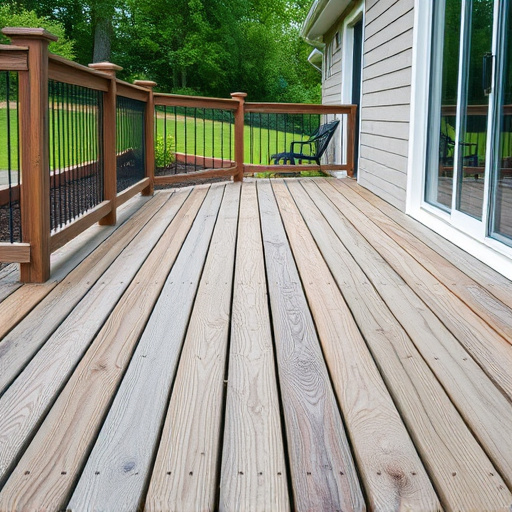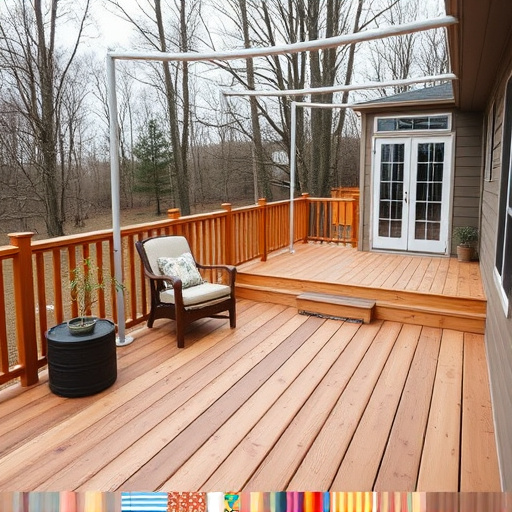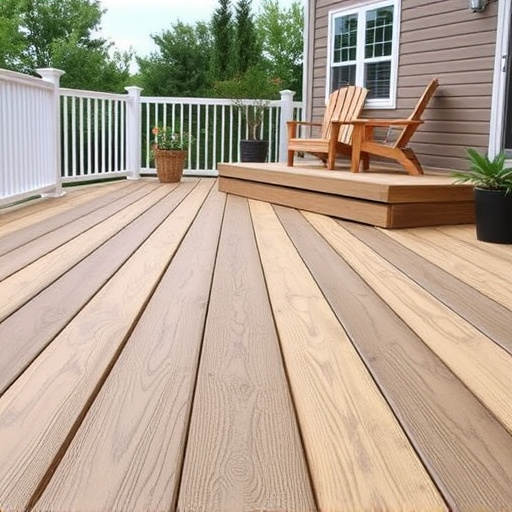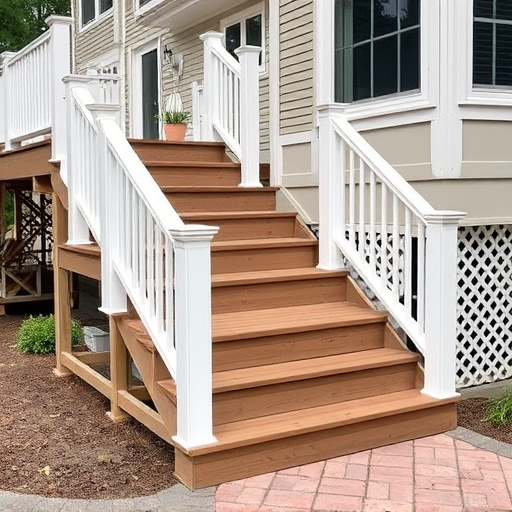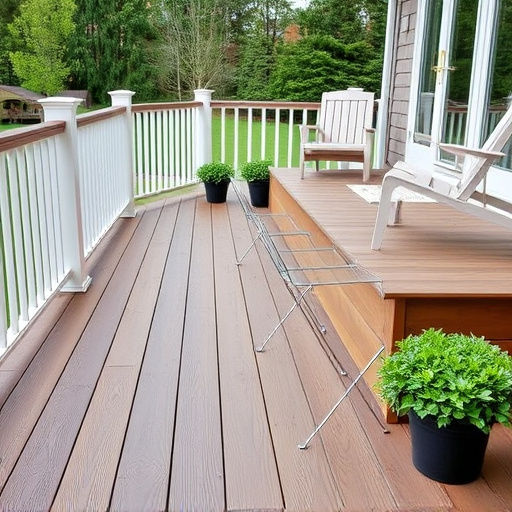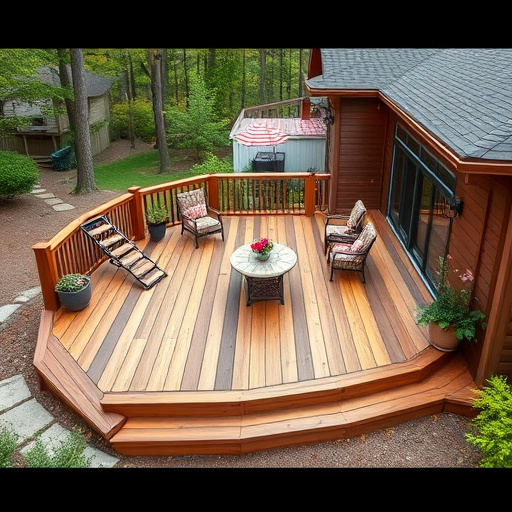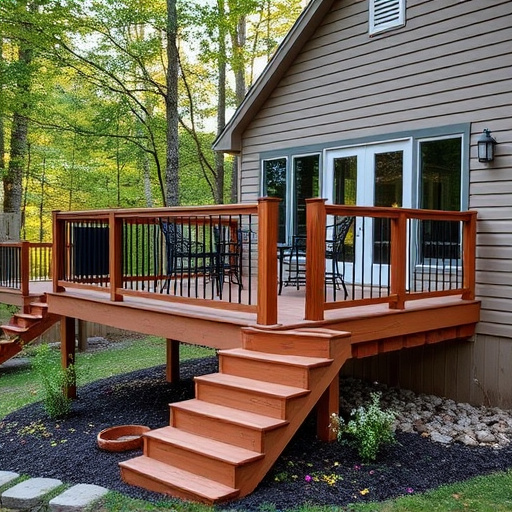To maintain a raised deck's integrity and protect against leaks, mold, and rot, implement meticulous waterproofing strategies. Mirror commercial roofing techniques with detailed flashing and joint sealing. Utilize high-quality waterproof membranes and regular cleaning and inspection for optimal defense against moisture intrusion. Choose the right materials based on climate, sun exposure, and moisture levels, such as penetrating sealers or coating systems. Begin with a smooth base, use moisture-resistant decking, and implement effective barriers like membranes or coatings. Direct water flow with proper siding and gutters while promptly repairing any damage to ensure the deck's longevity.
Elevate your outdoor space with a beautiful, durable raised deck—and protect it from water damage with effective waterproofing. This comprehensive guide explores best practices for keeping your elevated deck dry and rot-free. From understanding common challenges and choosing the right materials to expert installation tips, learn how to ensure longevity and maintain your investment. Mastering raised deck waterproofing is key to a safe, low-maintenance outdoor oasis.
- Understanding Raised Deck Waterproofing: Common Challenges and Prevention Strategies
- Choosing the Right Waterproofing Materials for Your Elevated Deck
- Installation Tips and Best Practices for Long-Lasting Protection
Understanding Raised Deck Waterproofing: Common Challenges and Prevention Strategies
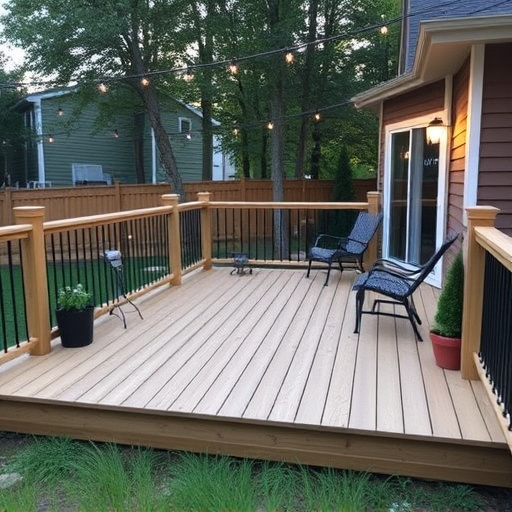
Raised decks, while aesthetically pleasing, present unique challenges when it comes to waterproofing. This is primarily due to their elevated nature, which exposes them to increased moisture levels from rain, snow, and condensation. Common issues include leaks, mold growth, and wood rot, often stemming from inadequate flashing, joint sealing, or surface protection.
Prevention lies in adopting robust strategies that mirror best practices in commercial roofing and siding installation. This involves meticulous detailing during construction, including proper flashing around perimeter joints and through deck levels. Applying high-quality waterproof membranes and coatings to the deck’s surface and crevices creates a protective barrier against moisture intrusion. Regular maintenance, such as cleaning and inspecting for signs of damage or deterioration, is crucial in safeguarding the raised deck’s longevity, ensuring that home exterior services remain effective and the structure remains sound.
Choosing the Right Waterproofing Materials for Your Elevated Deck
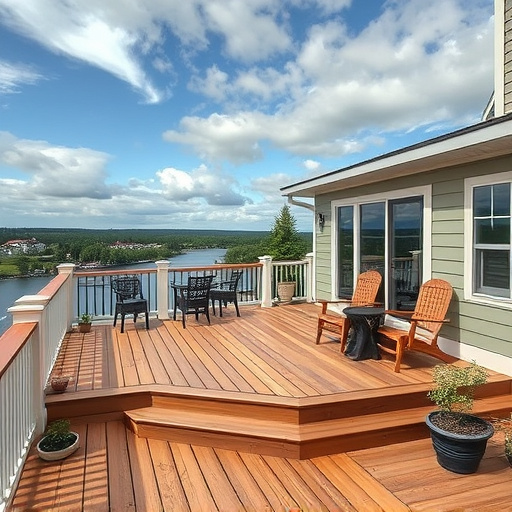
When it comes to raised deck waterproofing, selecting the appropriate materials is a crucial first step. The right choice ensures your deck stays dry, durable, and safe for years to come. Consider factors like climate, sun exposure, and moisture levels when deciding on waterproofing products. For instance, choose UV-resistant membranes if your deck faces prolonged sunlight, as these protect against fading and cracking.
Different materials offer unique benefits tailored to specific needs. Penetrating sealers, for home exterior services, provide a natural barrier against water absorption, ideal for lighter woods. Coating systems, on the other hand, offer superior protection with multiple layers that bond directly to the deck surface, enhancing its longevity. Roofing and siding experts recommend evaluating your budget, maintenance preferences, and expected lifespan before making a decision.
Installation Tips and Best Practices for Long-Lasting Protection
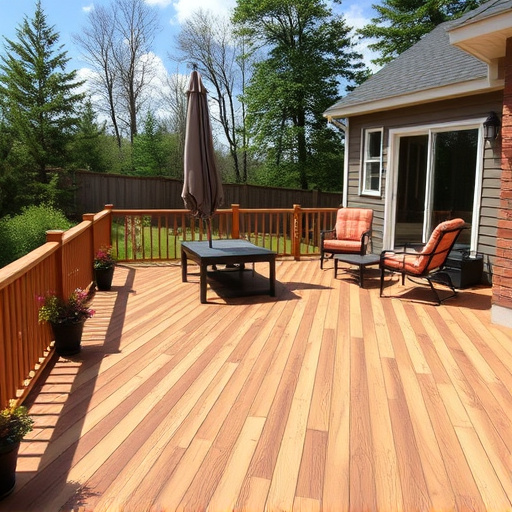
When installing a raised deck, proper waterproofing is key to ensuring its longevity and protecting your investment. Here are some essential tips for achieving long-lasting protection. Firstly, ensure a smooth base by preparing the surface thoroughly. Fill any gaps or cracks with high-quality filler and prime the deck to create a solid foundation. Use quality decking materials that are resistant to moisture and decay, such as treated wood or composite boards.
For an effective waterproof barrier, consider using a membrane or coating designed specifically for raised decks. Install siding and gutters to direct water away from the structure, preventing pooling and potential damage. Regularly inspect and maintain these components, replacing any damaged or missing pieces promptly. Additionally, engage professional roofing services for commercial roofing solutions tailored to your deck’s unique requirements, ensuring exceptional protection against the elements.
When it comes to protecting your raised deck, implementing best practices is key. By understanding common challenges, selecting the right waterproofing materials, and adhering to expert installation tips, you can ensure your elevated deck remains dry, durable, and structurally sound for years to come. Remember, a well-maintained raised deck provides both functional outdoor space and aesthetic appeal, so investing in quality waterproofing is a smart choice.








